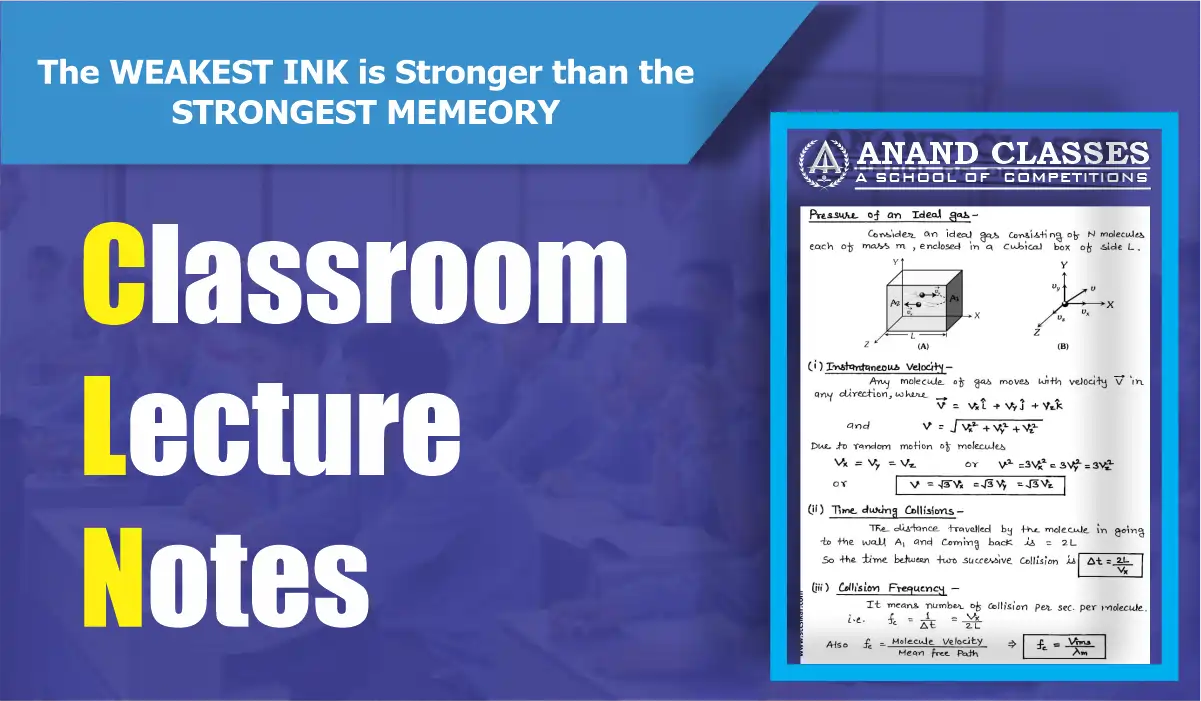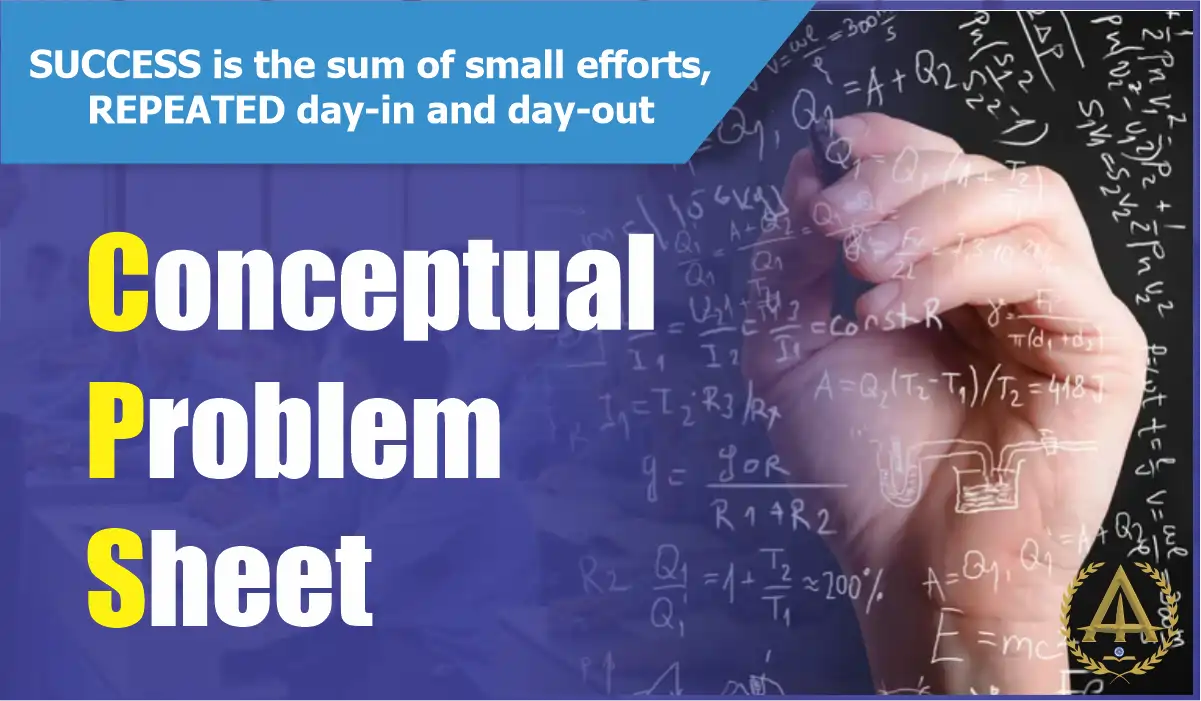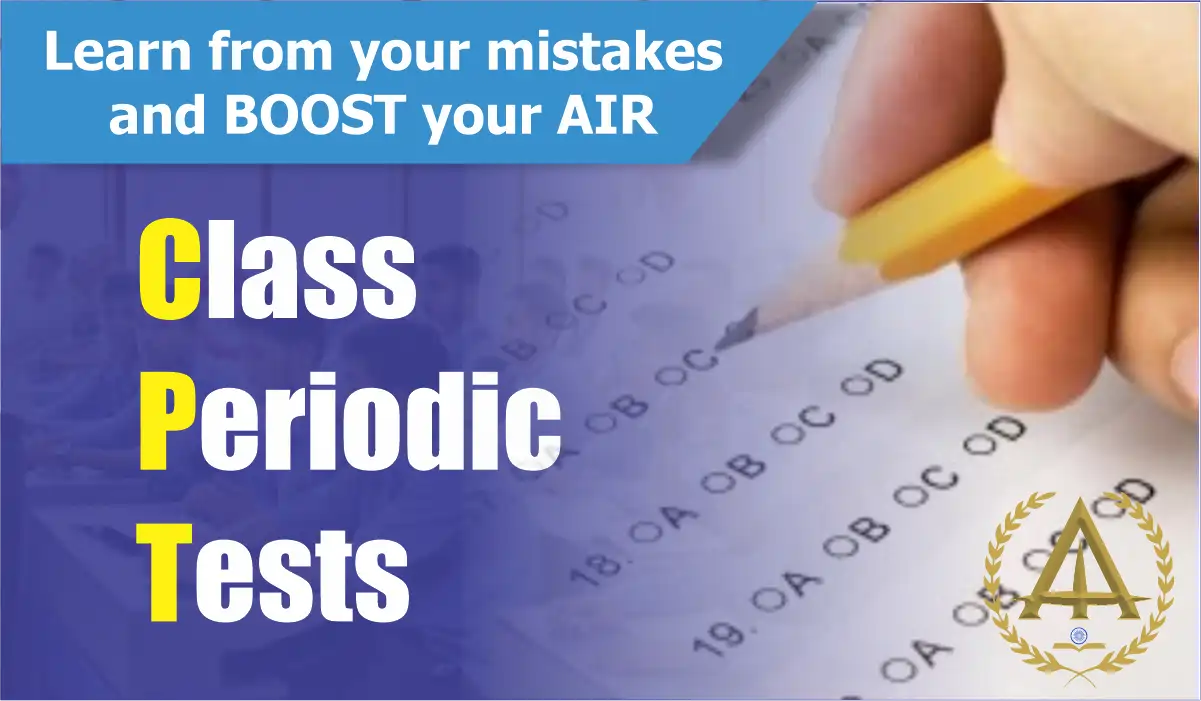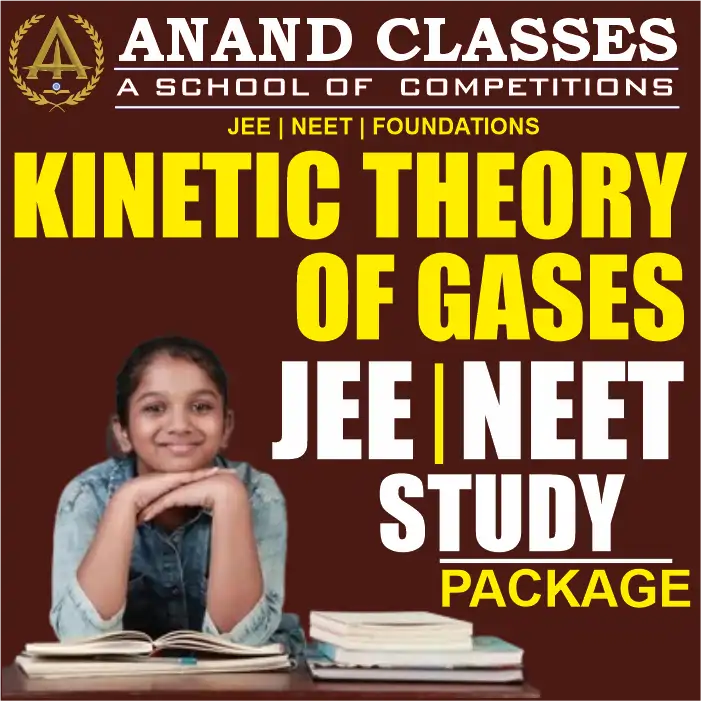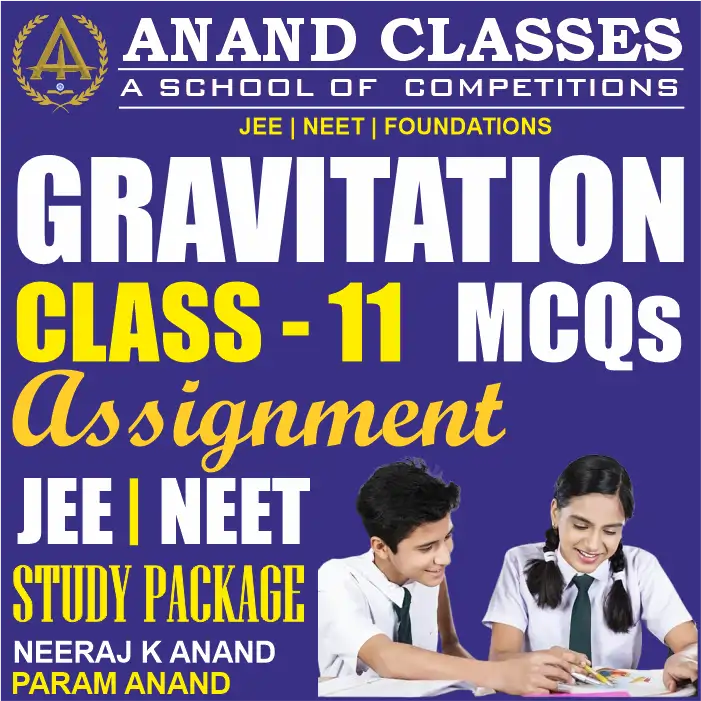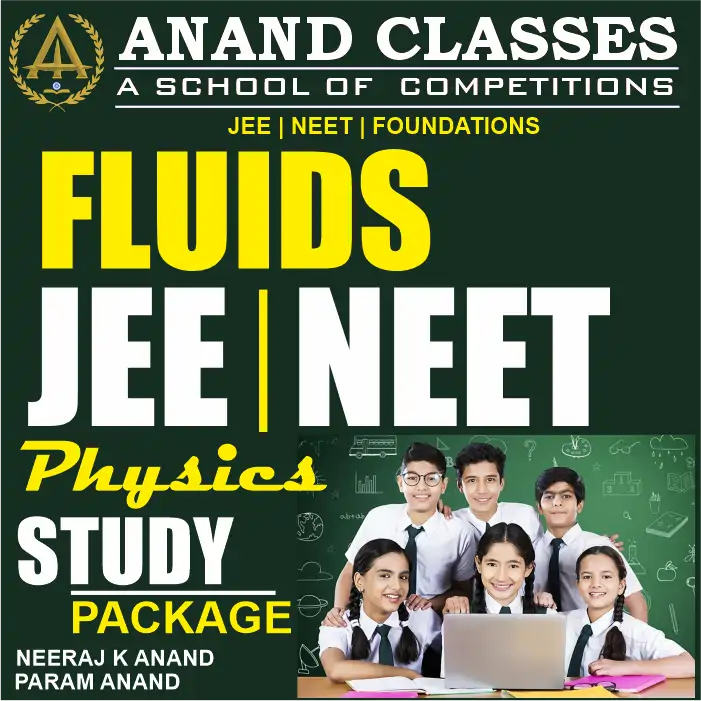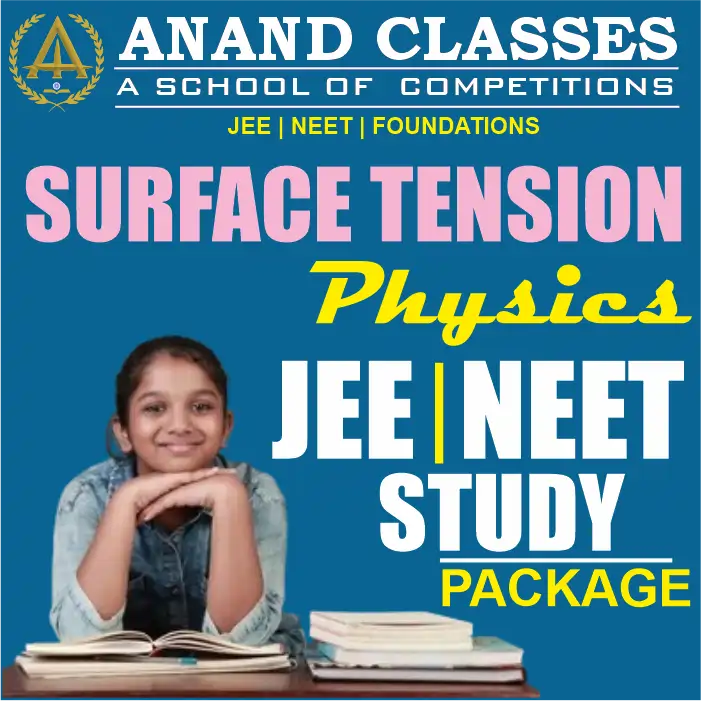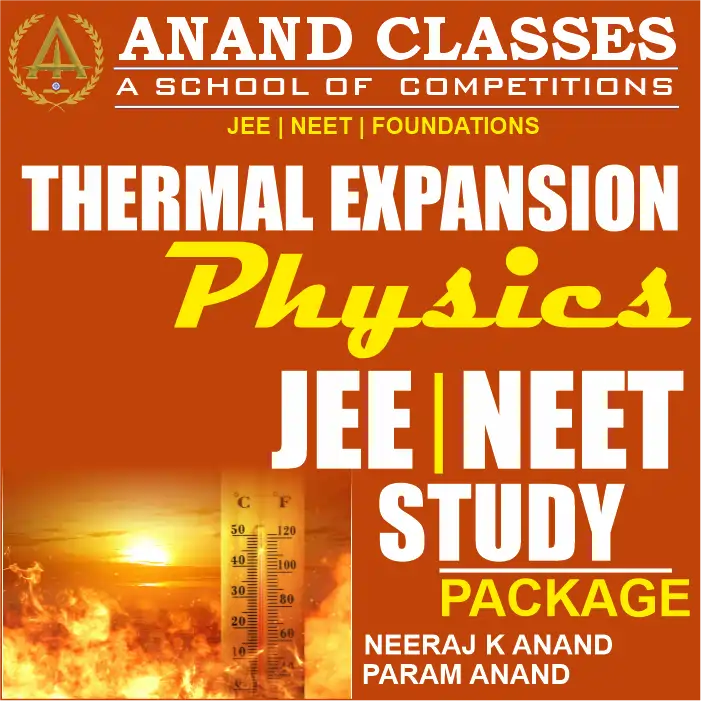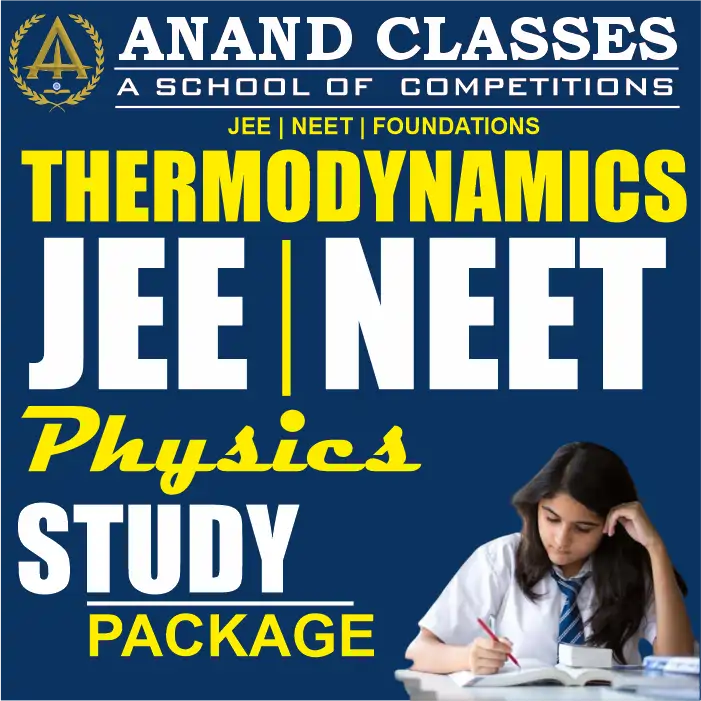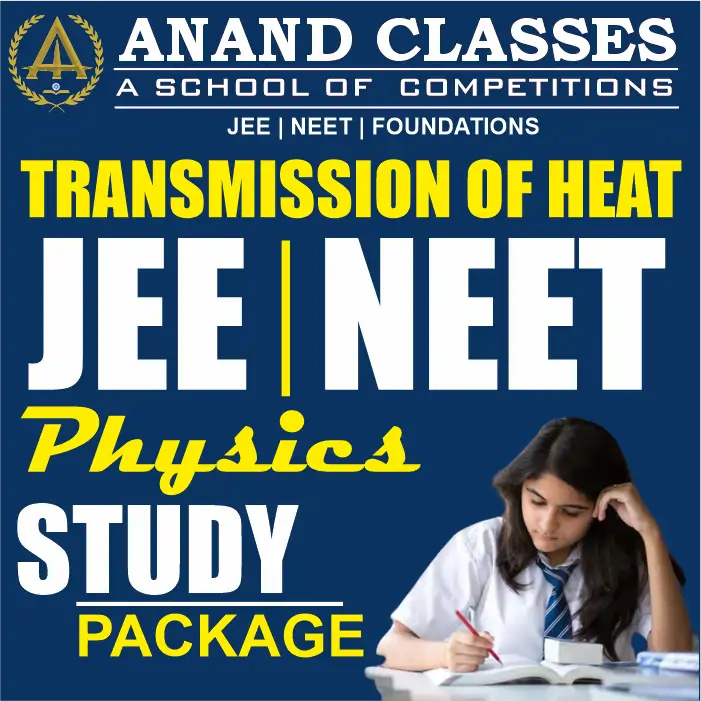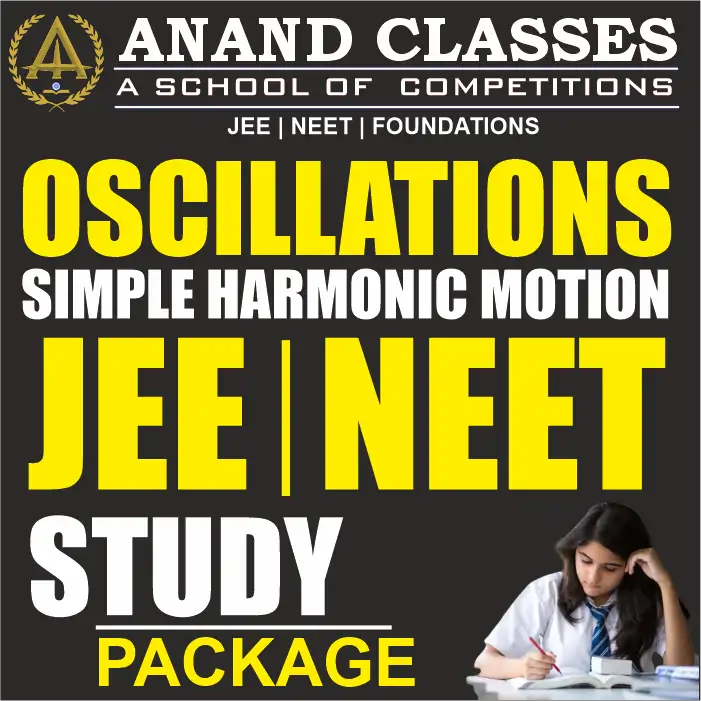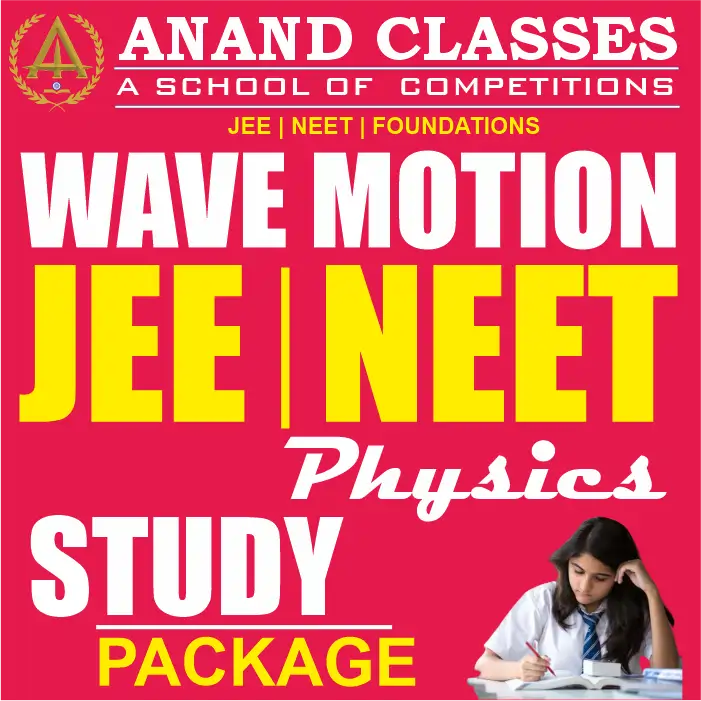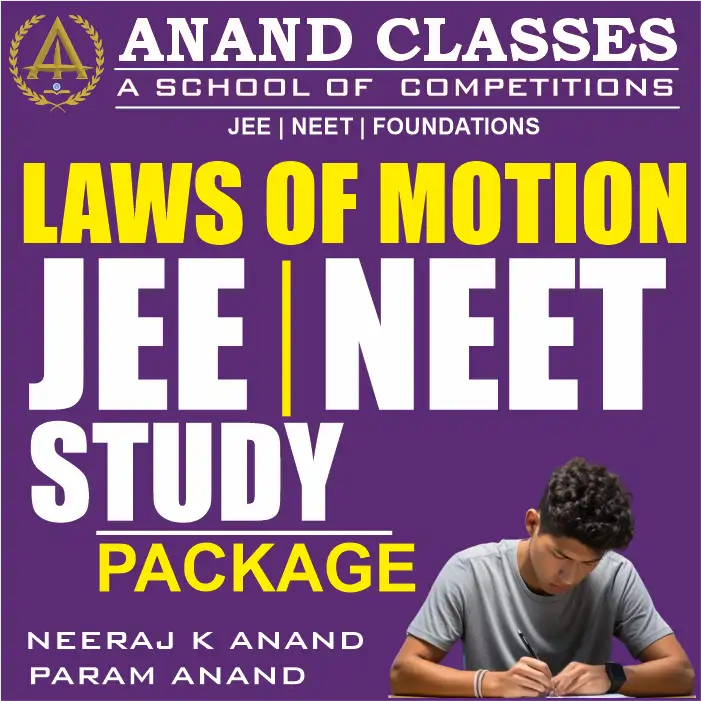Kinetic Theory of Gases Notes With MCQS Physics Class 11 CBSE Study Material Full Chapter Download pdf
What is the Kinetic Theory of Gas?
The kinetic theory of gases explains the behaviour of molecules, which should further explain the behaviour of an ideal gas. The Ideal Gas equation consists of the pressure (P), volume (V), and temperature (T) of gases at low temperatures and the equation is: PV = nRT
Where n = number of moles in the gas R = gas constant having value 8.314JK−1mol−1
Now, any gas following this equation is termed an ideal gas. Below are some certain assumptions that we consider for describing ideal gas behaviour.
What are the Assumptions of the Kinetic Theory of Gases?
- All gas molecules constantly move in random directions.
- The size of molecules is very less than the separation between the molecules
- The molecules of the sample do not exert any force on the walls of the container during the collision when the gas sample is contained.
- It has a very small time interval of collision between two molecules and between a molecule and the wall.
- Collisions between molecules and walls and even between molecules are elastic in nature.
- Newton’s laws of motion can be seen in all the molecules in a certain gas sample.
- With due course of time, a gas sample comes to a steady state. The molecule’s distribution and the density of molecules do not depend on the position, distance and time.
What is the law of equipartition of energy?
According to this law, when a system is in equilibrium provided the temperature is absolute, the total energy tends to be distributed evenly in the various energy modes of absorption. Each translational and rational degree of freedom represents one energy mode of absorption.
With the help of this law, we can determine the values of molar-specific heat of gases.
Frequently Asked Questions on CBSE Class 11 Physics Notes Chapter Kinetic Theory of Gases
What is the Ideal gas equation?
The ideal gas law (PV = nRT) relates to the macroscopic properties of ideal gases.
What does the molecular theory of gases?
The Kinetic Molecular Theory explains the forces between molecules and the energy that they possess.
How many gas laws are present?
Gas Laws: Boyle’s Law, Charle’s Law, Gay-Lussac’s Law, Avogadro’s Law.
JEE NEET Physics Chemistry Math Science Jalandhar Coaching Tuition Center Classes near me in Jalandhar
ANAND CLASSES offers IIT-JEE (Main & Advanced) & NEET Exams Coaching Center in Urban Estate Phase-II Jalandhar. ANAND CLASSES is the prevalent establishment in the Jalandhar for IIT-JEE (Main & Advanced) & NEET Exams. It is surely famous for its selective class management classes and productive Best IIT-JEE (Main & Advanced) & NEET Exams Coaching institute in Jalandhar.
Best Coaching Center for NEET near me in Jalandhar
The faculty at ANAND CLASSES is highly qualified and vastly experienced in successfully coaching students for IIT-JEE (Main & Advanced) & NEET Exams.
Best NEET Coaching Institute In Jalandhar
NEET Coaching near me
ANAND CLASSES pioneered itself as the best coaching institute for the preparation of IIT JEE (Main + Advanced). We provide systematic coaching and competitive environment to the JEE (Main + Advanced) aspirants with an outstanding preparation capability and infrastructure facilities, which has made it to the first choice of the students. We have a team of highly qualified and competent faculties dedicated towards the students’ performance and provide quality education to the students.
Best Coaching Center for JEE Mains and Advanced near me in Jalandhar
Best JEE Mains and Advanced Coaching Institute In Jalandhar
JEE Coaching near me
Major Topics and Subtopic of Chapter: Kinetic Theory of Gases (Class 11)
- Introduction to Kinetic Theory 1.1 Definition and Basic Concepts 1.2 Historical Development 1.3 Significance of Kinetic Theory
- Postulates of Kinetic Theory 2.1 Molecular Nature of Gases 2.2 Assumptions and Postulates 2.3 Explanation of Gas Laws
- Derivation of Gas Laws 3.1 Boyle’s Law 3.1.1 Derivation using Kinetic Theory 3.1.2 Mathematical Representation 3.2 Charles’s Law 3.2.1 Derivation using Kinetic Theory 3.2.2 Mathematical Representation 3.3 Avogadro’s Law 3.3.1 Derivation using Kinetic Theory 3.3.2 Mathematical Representation
- Kinetic Interpretation of Temperature 4.1 Relationship between Kinetic Energy and Temperature 4.2 Absolute Temperature Scale
- Behavior of Gases 5.1 Deviation from Ideal Behavior 5.2 Real Gases vs. Ideal Gases 5.3 Van der Waals Equation
- Distribution of Molecular Speeds 6.1 Maxwell’s Distribution of Speeds 6.2 Most Probable Speed, Average Speed, and Root Mean Square Speed 6.3 Temperature and Distribution of Speeds
- Kinetic Energy and Specific Heat 7.1 Equipartition of Energy 7.2 Degrees of Freedom 7.3 Specific Heat of Gases
- Law of Equipartition of Energy 8.1 Statement of the Law 8.2 Applications and Limitations
- Mean Free Path and Collision Frequency 9.1 Definition and Significance 9.2 Factors Affecting Mean Free Path 9.3 Collision Frequency
- Diffusion and Effusion 10.1 Diffusion in Gases 10.2 Effusion of Gases 10.3 Graham’s Law of Diffusion
- Dalton’s Law of Partial Pressures 11.1 Definition and Explanation 11.2 Application in Gas Mixtures
- Kinetic Theory and Thermodynamics 12.1 Relationship between Kinetic Theory and Thermodynamics 12.2 Thermodynamic Properties and Kinetic Interpretation
- Summary and Review Questions 13.1 Recapitulation of Key Concepts 13.2 Review Questions and Exercises
1. Introduction to Kinetic Theory
1.1 Definition and Basic Concepts
- Kinetic Theory: It explains the behavior of gases in terms of the motion of particles.
- Gas Properties: Assumes gases consist of tiny particles with negligible volume, constant random motion, and elastic collisions.
- Macroscopic Observations: Explains gas pressure, volume, and temperature in terms of molecular motion.
1.2 Historical Development
- Boyle and Charles Laws: Early experimental findings.
- Kinetic Theory Pioneers: Bernoulli, Clausius, and Maxwell.
- Statistical Mechanics: Modern development linking microscopic behavior to macroscopic properties.
1.3 Significance of Kinetic Theory
- Understanding Gas Behavior: Helps explain gas laws and deviations from ideal behavior.
- Prediction of Macroscopic Properties: Connects microscopic motion to macroscopic observations.
- Applications: In fields like physics, chemistry, and engineering.
2. Postulates of Kinetic Theory
2.1 Molecular Nature of Gases
- Particle Model: Assumes gases consist of particles in constant motion.
- Size and Separation: Particles are small with large separations.
2.2 Assumptions and Postulates
- Perfect Elasticity: Collisions are perfectly elastic with no energy loss.
- Constant Random Motion: Particles move in random directions at constant speeds.
- Negligible Volume: Particle volume is negligible compared to the container.
2.3 Explanation of Gas Laws
- Boyle’s Law: Explained by particle collisions with container walls.
- Charles’s Law: Particle speed increases with temperature.
- Avogadro’s Law: More particles lead to increased collisions.
3. Derivation of Gas Laws
3.1 Boyle’s Law
- Derivation: Pressure-volume relationship explained using kinetic theory.
- Mathematical Representation: .
3.2 Charles’s Law
- Derivation: Volume-temperature relationship explained through molecular motion.
- Mathematical Representation: .
3.3 Avogadro’s Law
- Derivation: Relationship between volume and number of moles.
- Mathematical Representation: .
4. Kinetic Interpretation of Temperature
4.1 Relationship between Kinetic Energy and Temperature
- Kinetic Energy Formula: .
- Temperature and KE: Directly proportional.
4.2 Absolute Temperature Scale
- Kelvin Scale: Based on absolute zero.
- Relation with Celsius: .
5. Behavior of Gases
5.1 Deviation from Ideal Behavior
- Real Gases: Deviate from ideal behavior at high pressures or low temperatures.
- Van der Waals Equation: Corrects ideal gas equation.
5.2 Real Gases vs. Ideal Gases
- Ideal Gases: Follow ideal gas law perfectly.
- Real Gases: Exhibit deviations due to intermolecular forces.
5.3 Van der Waals Equation
- Correction Factors: Includes corrections for particle size and attractive forces.
6. Distribution of Molecular Speeds
6.1 Maxwell’s Distribution of Speeds
- Graphical Representation: Bell-shaped curve.
- Speed Distribution: Describes the range of speeds in a gas.
6.2 Most Probable Speed, Average Speed, and Root Mean Square Speed
- Definitions and Formulas: Explained in terms of Maxwell’s distribution.
6.3 Temperature and Distribution of Speeds
- Effect of Temperature: Higher temperature increases average speed.
7. Kinetic Energy and Specific Heat
7.1 Equipartition of Energy
- Energy Distribution: Each degree of freedom contributes 1/2 to energy.
7.2 Degrees of Freedom
- Translation, Rotation, Vibration: Contributions to kinetic energy.
7.3 Specific Heat of Gases
- Definition: Amount of heat required to raise the temperature of a unit mass by 1 degree.
8. Law of Equipartition of Energy
8.1 Statement of the Law
- Energy Distribution: Each degree of freedom contributes 1/2 to energy.
8.2 Applications and Limitations
- Application: Explains heat capacities.
- Limitations: Assumes classical mechanics, doesn’t apply at low temperatures.
9. Mean Free Path and Collision Frequency
9.1 Definition and Significance
- Mean Free Path: Average distance between collisions.
- Importance: Determines gas conductivity.
9.2 Factors Affecting Mean Free Path
- Pressure and Temperature: Influence collision frequency.
- Molecule Size: Affects the probability of collisions.
9.3 Collision Frequency
- Relation with Pressure: Directly proportional.
10. Diffusion and Effusion
10.1 Diffusion in Gases
- Definition: Spontaneous mixing of gases.
- Rate Factors: Molecular speed and size.
10.2 Effusion of Gases
- Definition: Escape of gas through a small hole.
- Graham’s Law: Relates effusion rates to molecular masses.
10.3 Graham’s Law of Diffusion
- Graham’s law of diffusion describes the relationship between the rates at which two gases diffuse. It is named after the Scottish chemist Thomas Graham, who formulated this law. The law is particularly applicable to the effusion of gases through small openings.The rate of diffusion or effusion of a gas is inversely proportional to the square root of its molar mass, provided the temperature and pressure are constant.
11. Dalton’s Law of Partial Pressures
11.1 Definition and Explanation
- Partial Pressure: Pressure exerted by each gas in a mixture.
- Dalton’s Law: .
11.2 Application in Gas Mixtures
- Gas Collection: Calculating partial pressures of collected gases.
12. Kinetic Theory and Thermodynamics
12.1 Relationship between Kinetic Theory and Thermodynamics
- Macroscopic Properties: Linked to molecular motion.
- Thermodynamic Laws: Interpreted in terms of kinetic theory.
12.2 Thermodynamic Properties and Kinetic Interpretation
- Entropy: Related to molecular disorder.
- Internal Energy: Kinetic and potential energy of molecules.
13. Summary and Review Questions
13.1 Recapitulation of Key Concepts
- Concept Review: Key postulates, laws, and equations.
13.2 Review Questions and Exercises
- Practice Problems: Application of concepts learned.
- Critical Thinking: Open-ended questions for deeper understanding.
Conceptual questions along with brief answers related to the Kinetic Theory of Gases for Class 11:
- Fundamental Concepts:
- Q: What is the fundamental idea behind the Kinetic Theory of Gases?
- A: The fundamental idea is that gases consist of tiny particles in constant, random motion, and their macroscopic properties can be explained by analyzing the motion of these particles.
- Q: What is the fundamental idea behind the Kinetic Theory of Gases?
- Postulates and Assumptions:
- Q: Explain one of the postulates of the Kinetic Theory of Gases.
- A: One postulate is that gas particles are in constant, random motion and undergo perfectly elastic collisions with each other and with the walls of the container.
- Q: Explain one of the postulates of the Kinetic Theory of Gases.
- Derivation of Gas Laws:
- Q: How can Boyle’s Law be derived using the Kinetic Theory of Gases?
- A: Boyle’s Law can be derived by considering the impact of gas particles colliding with the walls of the container. As volume decreases, the number of collisions increases, leading to an increase in pressure.
- Q: How can Boyle’s Law be derived using the Kinetic Theory of Gases?
- Temperature and Kinetic Energy:
- Q: Why does an increase in temperature lead to an increase in the kinetic energy of gas particles?
- A: An increase in temperature corresponds to an increase in the average kinetic energy of gas particles. Temperature is directly proportional to kinetic energy.
- Q: Why does an increase in temperature lead to an increase in the kinetic energy of gas particles?
- Behavior of Gases:
- Q: Why do real gases deviate from ideal behavior at high pressures or low temperatures?
- A: Real gases deviate due to intermolecular forces becoming significant at high pressures or low temperatures, causing deviations from the ideal gas law.
- Q: Why do real gases deviate from ideal behavior at high pressures or low temperatures?
- Distribution of Molecular Speeds:
- Q: What does Maxwell’s distribution of speeds illustrate?
- A: Maxwell’s distribution shows the distribution of speeds of gas particles in a sample, highlighting that a range of speeds exists, with most probable speed, average speed, and root mean square speed providing different perspectives.
- Q: What does Maxwell’s distribution of speeds illustrate?
- Kinetic Energy and Specific Heat:
- Q: How are degrees of freedom related to the specific heat of gases?
- A: The specific heat is related to the degrees of freedom of gas particles through the equipartition of energy. Each degree of freedom contributes 1/2 to the total energy.
- Q: How are degrees of freedom related to the specific heat of gases?
- Mean Free Path and Collision Frequency:
- Q: What is the mean free path of gas particles, and how does it relate to collision frequency?
- A: The mean free path is the average distance a particle travels between collisions. It is inversely proportional to collision frequency; longer mean free paths correspond to fewer collisions.
- Q: What is the mean free path of gas particles, and how does it relate to collision frequency?
- Diffusion and Effusion:
- Q: Explain the difference between diffusion and effusion.
- A: Diffusion is the gradual mixing of gases, while effusion is the escape of gas through a small opening. Both processes involve the movement of gas particles.
- Q: Explain the difference between diffusion and effusion.
- Dalton’s Law of Partial Pressures:
- Q: How does Dalton’s Law of Partial Pressures explain the behavior of gas mixtures?
- A: Dalton’s Law states that the total pressure exerted by a mixture of gases is the sum of the partial pressures of individual gases. It accounts for each gas contributing independently to the total pressure.
- Kinetic Theory and Thermodynamics:
- Q: How does kinetic theory help interpret thermodynamic properties like entropy?
- A: Kinetic theory explains entropy as a measure of molecular disorder. An increase in entropy corresponds to an increase in the number of possible microscopic arrangements of particles.
- Applications and Real-world Examples:
- Q: Provide an example of how kinetic theory is applied in real-world scenarios.
- A: One example is the understanding of gas behavior in the operation of internal combustion engines, where the kinetic theory helps explain gas expansion and pressure changes.
Short Answer Type Questions
- Define an ideal gas.
An ideal gas is a hypothetical gas that obeys Boyle’s law, Charles’ law, and Gay-Lussac’s law perfectly. It is also assumed that the gas molecules have no volume and do not interact with each other.
- What are the postulates of the kinetic theory of gases?
The postulates of the kinetic theory of gases are:
- Gas molecules are in a constant state of random motion.
- The molecules are considered to be point masses and do not interact with each other except for elastic collisions.
- The average kinetic energy of the gas molecules is directly proportional to the absolute temperature of the gas.
- The average kinetic energy of all gas molecules at a given temperature is the same.
- What is the difference between pressure and stress?
Pressure is the force exerted by a gas per unit area on the walls of its container. Stress is the force exerted per unit area on a surface.
- What is the relationship between pressure, volume, and temperature of an ideal gas?
The relationship between pressure, volume, and temperature of an ideal gas is given by the ideal gas law:
PV = nRT
where:
- P is the pressure of the gas
- V is the volume of the gas
- n is the number of moles of gas
- R is the universal gas constant (8.314 J/mol·K)
- T is the temperature of the gas (in Kelvin)
- What is the average kinetic energy of an ideal gas molecule?
The average kinetic energy of an ideal gas molecule is given by:
KE = (3/2)kT
where:
- k is Boltzmann’s constant (1.381 × 10-23 J/K)
- T is the temperature of the gas (in Kelvin)
Long Answer Type Questions
- Derive Boyle’s law from the kinetic theory of gases.
Boyle’s law states that the volume of a given quantity of gas is inversely proportional to the pressure of the gas, at a constant temperature.
To derive Boyle’s law from the kinetic theory of gases, consider a gas enclosed in a container with a fixed volume. The molecules of the gas are constantly moving and colliding with the walls of the container. The pressure of the gas is caused by these collisions.
If we double the volume of the container, the molecules will have twice as much space to move around in. This will result in a decrease in the number of collisions between the molecules and the walls of the container. The pressure of the gas will therefore decrease.
The amount of decrease in pressure is proportional to the increase in volume. This means that the volume of a given quantity of gas is inversely proportional to the pressure of the gas, at a constant temperature.
- Derive Charles’ law from the kinetic theory of gases.
Charles’ law states that the volume of a given quantity of gas is directly proportional to the temperature of the gas, at a constant pressure.
To derive Charles’ law from the kinetic theory of gases, consider a gas enclosed in a container with a fixed pressure. As the temperature of the gas increases, the average kinetic energy of the molecules also increases. This means that the molecules will move faster and collide with the walls of the container more frequently.
The increased frequency of collisions will result in a larger force being exerted on the walls of the container. This will cause the container to expand, and the volume of the gas will increase.
The amount of increase in volume is proportional to the increase in temperature. This means that the volume of a given quantity of gas is directly proportional to the temperature of the gas, at a constant pressure.
- Derive Gay-Lussac’s law from the kinetic theory of gases.
Gay-Lussac’s law states that the pressure of a given quantity of gas is directly proportional to the temperature of the gas, at a constant volume.
To derive Gay-Lussac’s law from the kinetic theory of gases, consider a gas enclosed in a container with a fixed volume. As the temperature of the gas increases, the average kinetic energy of the molecules also increases. This means that the molecules will move faster and collide with the walls of the container more frequently.
The increased frequency of collisions will result in a larger force being exerted on the walls of the container. This will cause the pressure of the gas to increase.
The amount of increase in pressure is proportional to the increase in temperature. This means that the pressure of a given quantity of gas is directly proportional to the temperature of the gas, at a constant volume.
- Explain the concept of root mean square (rms)
The root mean square speed (rms speed) is a way to measure the average speed of particles in a collection. It is defined as the square root of the mean of the squares of the speeds of the particles. In other words, if you have a collection of particles, you can calculate the rms speed by squaring the speed of each particle, adding up all the squares, dividing by the number of particles, and then taking the square root of the result.
The rms speed is useful because it takes into account the fact that some particles in a collection may be moving faster than others. For example, if you have a collection of gas molecules, some of the molecules will be moving faster than others. The rms speed takes into account the speeds of all of the molecules, so it gives you a more accurate idea of the average speed of the molecules in the collection.
The rms speed is also useful because it is related to the temperature of a gas. The average kinetic energy of a gas molecule is proportional to the temperature of the gas. The rms speed is also proportional to the square root of the temperature of the gas. This means that the rms speed of the gas molecules increases as the temperature of the gas increases.
Short Answer Type Questions
- What is the difference between a real gas and an ideal gas?
A real gas is a gas that does not obey the ideal gas law perfectly. Real gases exhibit deviations from the ideal gas law due to the interactions between the gas molecules and the finite volume of the gas molecules.
- What is the effect of temperature on the root mean square (rms) speed of gas molecules?
The rms speed of gas molecules is directly proportional to the square root of the temperature of the gas. This means that as the temperature of a gas increases, the rms speed of the gas molecules also increases.
- What is the effect of pressure on the average kinetic energy of gas molecules?
The average kinetic energy of gas molecules is directly proportional to the pressure of the gas. This means that as the pressure of a gas increases, the average kinetic energy of the gas molecules also increases.
- What is the effect of volume on the number of collisions between gas molecules?
The number of collisions between gas molecules is inversely proportional to the volume of the gas. This means that as the volume of a gas increases, the number of collisions between gas molecules decreases.
- What is the relationship between the molar specific heat capacity of a gas and the degrees of freedom of the gas molecules?
The molar specific heat capacity of a gas is directly proportional to the number of degrees of freedom of the gas molecules. A degree of freedom is a way in which a gas molecule can move. For example, a monatomic gas molecule has three degrees of freedom (translation), while a diatomic gas molecule has five degrees of freedom (translation, rotation, and vibration).
Long Answer Type Questions
- Explain the concept of diffusion and explain how it is related to the kinetic theory of gases.
Diffusion is the process by which gas molecules move from an area of high concentration to an area of low concentration. This process occurs because the gas molecules are constantly in random motion and will collide with each other. When two gas molecules collide, they can exchange energy and momentum. This exchange of energy and momentum can cause the molecules to move in different directions.
The rate of diffusion is proportional to the square root of the temperature of the gas and inversely proportional to the square root of the molar mass of the gas. This is because the average kinetic energy of gas molecules increases with temperature, and the molar mass of a gas is a measure of the size of the gas molecules.
- Explain the concept of thermal conductivity and explain how it is related to the kinetic theory of gases.
Thermal conductivity is the ability of a material to transfer heat. In gases, thermal conductivity is due to the transfer of energy from one gas molecule to another through collisions.
The rate of thermal conductivity is proportional to the average kinetic energy of the gas molecules and the number of collisions between gas molecules. This is because the average kinetic energy of gas molecules increases with temperature, and the number of collisions between gas molecules increases with temperature and pressure.
- Explain the concept of viscosity and explain how it is related to the kinetic theory of gases.
Viscosity is the ability of a fluid to resist flow. In gases, viscosity is due to the transfer of momentum from one gas molecule to another through collisions.
The rate of viscosity is proportional to the average kinetic energy of the gas molecules and the mean free path of the gas molecules. The mean free path is the average distance that a gas molecule travels between collisions.
- Explain the concept of Brownian motion and explain how it is related to the kinetic theory of gases.
Brownian motion is the random movement of particles suspended in a fluid. This motion is caused by the bombardment of the particles by the molecules of the fluid.
Brownian motion is a direct consequence of the kinetic theory of gases. It provides experimental evidence for the existence of atoms and molecules.
Tags
kinetic theory of gases
kinetic theory of gases class 11
kinetic theory of gases formula
kinetic theory of gases pdf
kinetic theory of gases class 11 notes
kinetic theory of gases postulates
kinetic theory of gases ppt
kinetic theory of gases class 11 ppt
kinetic theory of gases notes
kinetic theory of gases proves which law
kinetic theory of gases assumes that the collisions between the molecules are
kinetic theory of gases assumptions
kinetic theory of gases and radiation
kinetic theory of gases and thermodynamics
kinetic theory of gases all formula
kinetic theory of gases assignment
kinetic theory of gases assignment pdf
kinetic theory of gases assumptions class 11
kinetic theory of gases applications
kinetic theory of gases and radiation handwritten notes pdf
kinetic theory of gases notes
kinetic theory of gases ncert
kinetic theory of gases neet questions
kinetic theory of gases notes pdf
kinetic theory of gases ncert solutions
kinetic theory of gases neet questions pdf download
kinetic theory of gases neet notes
kinetic theory of gases notes class 11
kinetic theory of gases numericals
kinetic theory of gases neet notes pdf
kinetic theory of gases class 11
kinetic theory of gases class 11 notes
kinetic theory of gases class 11 ppt
kinetic theory of gases class 9
kinetic theory of gases class 11 formulas
kinetic theory of gases class 11 chemistry
kinetic theory of gases class 11 notes pdf
kinetic theory of gases class 11 handwritten notes
kinetic theory of gases class 12
kinetic theory of gases class 11 numericals
kinetic theory of gases in hindi
kinetic theory of gases in chemistry
kinetic theory of gases important questions
kinetic theory of gases in thermodynamics
kinetic theory of gases introduction
kinetic theory of gases important topics
kinetic theory of gases images
kinetic theory of gases in hindi pdf
kinetic theory of gases in hindi pdf download
kinetic theory of gases in tamil meaning
kinetic theory of gases mcq
kinetic theory of gases meaning in hindi
kinetic theory of gases mcq neet
kinetic theory of gases meaning
kinetic theory of gases mind map
kinetic theory of gases mcq pdf
kinetic theory of gases mean free path
kinetic theory of gases multiple choice questions pdf
kinetic theory of gases multiple choice questions pdf neet
kinetic theory of gases maxwell distribution
kinetic theory of gases derivation
kinetic theory of gases definition
kinetic theory of gases definition chemistry
kinetic theory of gases derivation pdf
kinetic theory of gases definition physics
kinetic theory of gases diffusion
kinetic theory of gases dse
kinetic theory of gases def
kinetic theory of gases describes
kinetic theory of gases definition in english
kinetic theory of gases khan academy
kb in kinetic theory of gases
kinetic molecular theory of gases worksheet answer key
according to kinetic theory of gases kinetic energy depends on
value of k in kinetic theory of gases
kinetic energy formula in kinetic theory of gases
what is kinetic theory of gases
what is the kinetic theory of gasses
what does kinetic theory of gases state
kinetic theory of gases pdf
kinetic theory of gases postulates
kinetic theory of gases ppt
kinetic theory of gases proves which law
kinetic theory of gases provide a base for
kinetic theory of gases pdf notes
kinetic theory of gases physics
kinetic theory of gases pyq jee mains
kinetic theory of gases pyq neet
kinetic theory of gases proof
kinetic theory of gases jee mains questions
kinetic theory of gases jee notes
kinetic theory of gases jee notes pdf
kinetic theory of gases jee advanced questions
kinetic theory of gases jee formula
kinetic theory of gases weightage in jee mains
kinetic theory of gases class 11 jee
kinetic theory of gases previous year questions jee pdf
justify kinetic theory of gases
is kinetic theory of gases important for jee
kinetic theory of gases given by
kinetic theory of gases gif
kinetic theory of gases graph
kinetic theory of gases grade 11
kinetic theory of gases gcse
kinetic theory of granular gases
the kinetic theory of gases gives the formula
kinetic molecular theory of gases grade 10
kinetic theory of an ideal gas gives the relation
kinetic molecular theory of gases was given by
kinetic theory of gases hyperphysics
kinetic theory of gases handwritten notes pdf
kinetic theory of gases hcv solutions
kinetic theory of gases hsc solutions
kinetic theory of gases hsslive
kinetic theory of gases history
kinetic theory of gases hindi
kinetic theory of gases hindi translation
kinetic theory of heat gas
kinetic theory of gases and radiation handwritten notes pdf
kinetic theory of gases laws
kinetic theory of gases lecture notes pdf
kinetic theory of gases lesson plan
kinetic theory of gases liquid
kinetic theory of gases law definition
kinetic theory of gases l
kinetic theory of gases formula list
kinetic theory of gases a level physics
kinetic molecular theory of gases lesson plan
kinetic molecular theory of gases liquids and solids
kinetic theory of gases one shot
kinetic theory of gases objective questions
kinetic theory of gases on
kinetic theory of gases degree of freedom
postulates of kinetic theory of gases
assumptions of kinetic theory of gases
postulates of kinetic theory of gases class 11
derivation of kinetic theory of gases
mcq on kinetic theory of gases class 11 physics
application of kinetic theory of gases
kinetic theory of gases examples
kinetic theory of gases equation
kinetic theory of gases explain
kinetic theory of gases explanation
kinetic theory of gases experiment
kinetic theory of gases errorless pdf
kinetic theory of gases exercise
what is kinetic theory of gases
what is the kinetic theory of gasses
what does kinetic theory of gases state
kinetic theory of gases bsc 2nd year pdf
kinetic theory of gases bsc 1st year chemistry
kinetic theory of gases bsc notes chemistry
kinetic theory of gases byjus
kinetic theory of gases book pdf
kinetic theory of gases book
kinetic theory of gases by
kinetic theory of gases by physics wallah
kinetic theory of gases boyle’s law
kinetic theory of gases boltzmann equation
kinetic theory of gases worksheets
kinetic theory of gases was given by
kinetic theory of gases was put forward by
kinetic theory of gases wikipedia
kinetic theory of gases was proposed by
kinetic theory of gases which subject
kinetic theory of gases weightage in jee mains
kinetic theory of gases weightage in neet
kinetic theory of gases was first proposed by
kinetic theory of gases with an introduction to statistical mechanics
kinetic theory of gases videos
kinetic theory of gases vedantu
kinetic theory of gases viscosity
kinetic theory of gases and statistical mechanics
kinetic theory of gases vapor
kinetic theory of gas viscosity
kinetic molecular theory of gases video
kinetic theory of gases hc verma solutions
kinetic molecular theory of gases volume
kinetic molecular theory of gases volume pressure relationship
kinetic theory of gases formula
kinetic theory of gases formula pdf
kinetic theory of gases formula list
kinetic theory of gases formula neet
kinetic theory of gases formula pdf for neet
kinetic theory of gases formula derivation
what is kinetic theory of gases
what is the kinetic theory of gasses
what does kinetic theory of gases state
kinetic theory of gases questions and answers pdf
kinetic theory of gases questions
kinetic theory of gases question bank
kinetic theory of gases questions and answers
kinetic theory of gases questions and answers pdf class 11
kinetic theory of gases questions and answers pdf class 12
kinetic theory of gases quiz
kinetic theory of gases quizlet
kinetic theory of gases neet questions
kinetic theory of gases important questions
kinetic theory of gases topics
kinetic theory of gases toppr
kinetic theory of gases theory
kinetic theory of gases textbook
kinetic theory of gases temperature
kinetic theory of gases thermal conductivity
kinetic theory of gases thermodynamics
kinetic theory of gases assumes that the collisions between the molecules are
kinetic molecular theory of gases temperature
the kinetic theory of gases predicts that
kinetic theory of gases real
kinetic theory of gases relation
kinetic theory of real gas
kinetic theory of gases and radiation
kinetic theory of gases and radiation notes pdf
kinetic theory of gases and radiation notes
kinetic theory of gases and radiation handwritten notes pdf
kinetic theory of gases and radiation class 12 important questions
kinetic theory of gases and radiation notes pdf maharashtra board
kinetic theory of gases and radiation mcq
kinetic theory of gases comes under which chapter
kinetic theory of gases tells us
the kinetic theory of gases is used to explain the large scale
using kinetic theory of gases explain charles law
unit kinetic theory of gases
use the kinetic theory of gases to explain why
uses of kinetic theory of gases
use the kinetic theory of gases to explain this statement
the kinetic theory of gases can be used to derive
why is the kinetic theory of ideal gases useful
kinetic theory of gases youtube
kinetic theory of gases previous year questions
kinetic theory of gases previous year questions jee
kinetic theory of gases previous year questions neet
kinetic theory of gases previous year questions hsslive
kinetic theory of gases previous year questions jee pdf
kinetic molecular theory of gases youtube
kinetic theory of gases in your own words
kinetic theory of gases bsc 1st year
postulates of kinetic theory of gases bsc 1st year
kinetic theory of gases at absolute zero temperature
according to kinetic theory of gases absolute zero temperature is attained when
according to kinetic theory of gases absolute zero temperature
what is kinetic theory of gases
what is the kinetic theory of gasses
what does kinetic theory of gases state
kinetic theory of gas
kinetic theory of gases short notes
kinetic theory of gases slideshare
kinetic theory of gases solutions
kinetic theory of gases statement
kinetic theory of gases simulation
kinetic theory of gases save my exams
kinetic theory of gases simple definition
what is kinetic theory of gases
what is the kinetic theory of gasses
what does kinetic theory of gases state
kinetic theory of gases jee mains questions
kinetic theory of gases jee notes
kinetic theory of gases jee notes pdf
kinetic theory of gases jee advanced questions
kinetic theory of gases jee formula
kinetic theory of gases weightage in jee mains
kinetic theory of gases class 11 jee
kinetic theory of gases previous year questions jee pdf
is kinetic theory of gases important for jee
jee main physics kinetic theory of gases
kinetic theory of gases jee formula
is kinetic theory of gases important for jee
what is kinetic theory of gases
what is the kinetic theory of gasses
what is kinetic theory of gases class 11
what does kinetic theory of gases state
kinetic theory of gases jee advanced questions
what is kinetic theory of gases
what is the kinetic theory of gasses
what are the assumptions of kinetic theory of gas
what is kinetic theory of gases class 11
kinetic theory of gases class 11 jee notes
kinetic theory of gases class 11 jee
what is kinetic theory of gases
what is the kinetic theory of gasses
what is kinetic theory of gases class 11
kinetic theory of gas
kinetic theory of gases jee notes
kinetic theory of gases jee notes pdf
what is kinetic theory of gases
what is the kinetic theory of gasses
what is kinetic theory of gases class 11
kinetic theory of gas
kinetic theory of gases iit jee notes
kinetic theory of gases weightage in jee mains
is kinetic theory of gases important for jee
what is kinetic theory of gases
what is kinetic theory of gases class 11
what is the kinetic theory of gasses
jee mains questions on kinetic theory of gases
what is kinetic theory of gases
what is kinetic theory of gases class 11
what is the kinetic theory of gasses
what are the assumptions of kinetic theory of gas
kinetic theory of gases jee pyq
kinetic theory of gases jee notes pdf
kinetic theory of gases previous year questions jee pdf
jee main physics kinetic theory of gases
what is kinetic theory of gases
what is the kinetic theory of gasses
what is kinetic theory of gases class 11
kinetic theory of gases jee mains questions
kinetic theory of gases jee mains notes
kinetic theory of gases weightage in jee mains
jee main physics kinetic theory of gases
what is kinetic theory of gases
what is the kinetic theory of gasses
what is kinetic theory of gases class 11
what does kinetic theory of gases state
kinetic theory of gases jee questions
kinetic theory of gases jee advanced questions
kinetic theory of gases previous year questions jee pdf
what is kinetic theory of gases
kinetic theory of gas
what is the kinetic theory of gasses
state the kinetic theory of gas
kinetic theory of gases weightage in jee mains
what is kinetic theory of gases
what is the kinetic theory of gasses
what is kinetic theory of gases class 11
kinetic theory of gas
kinetic theory of gases jee mains previous year questions
kinetic theory of gases previous year questions jee pdf
what is kinetic theory of gases
what is kinetic theory of gases class 11
what is the kinetic theory of gasses
kinetic theory of gas
kinetic theory of gases neet questions
kinetic theory of gases neet questions pdf download
kinetic theory of gases neet notes
kinetic theory of gases neet notes pdf
kinetic theory of gases neet weightage
what is kinetic theory of gases
what is kinetic theory of gases class 11
what does kinetic theory of gases state
what is the kinetic theory of gasses
- Kinetic theory of gases
- Ideal gas law
- Gas properties
- Gas behavior
- Gas molecules
- Molecular motion
- Collisions
- Temperature
- Pressure
- Volume
- Boltzmann constant
Specific keywords:
- Assumptions of the kinetic theory of gases
- Postulates of the kinetic theory of gases
- Applications of the kinetic theory of gases
- Limitations of the kinetic theory of gases
- History of the kinetic theory of gases
- Scientists who contributed to the development of the kinetic theory of gases
- Real gases vs. ideal gases
- Deviations from the ideal gas law
- Van der Waals equation
- Kinetic energy of gas molecules
- Average kinetic energy of gas molecules
- Root mean square velocity
- Distribution of molecular velocities
- Maxwell-Boltzmann distribution
- Diffusion
- Viscosity
- Thermal conductivity
- Brownian motion
Related keywords:
- Thermodynamics
- Statistical mechanics
- Physics
- Chemistry
- Matter
- States of matter
- Solids
- Liquids
- Gases
- Plasma







